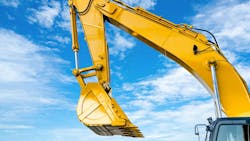How are the Fluid Power and Electric Motion Control Markets Performing?
Overall, 2023 has appeared to be another positive year for the fluid power and electric motion control industries and their customer markets. Several companies reported strong second quarter results this year, and shipments and orders data from the National Fluid Power Association (NFPA) has remained in relatively positive territory for much of the year.
The most recent data from NFPA shows shipments for hydraulics and pneumatics increased in August compared to the previous month.
READ MORE: Fluid Power Shipments Rise in August 2023
Positive conditions in customer markets such as construction and agricultural equipment have helped maintain strong demand for fluid power components, particularly hydraulics, during the year. And the Institute for Supply Chain Management recently reported the U.S. manufacturing industry continues to contract, but at a slower rate, leading to a slight improvement to its Manufacturing PMI (purchasing managers index) in September and benefitting industrial hydraulics, pneumatics and electronic motion control manufacturers.
As 2023 wraps up and we head into 2024, market growth is expected slow for most sectors before returning to higher growth trends in 2025 and beyond according to most of the economists who spoke at the NFPA's Industry & Economic Outlook Conference in August. Several other market reports our team has received indicate growth ahead for the fluid power and electric motion control industries as well.
For instance, long-term growth is anticipated for the robotics industry as manufacturers, warehouses and other markets look to automate tasks to increase productivity and overcome labor challenges. This will benefit both motion control sectors as hydraulic, pneumatic and electronic motion components are used in mobile and stationary robots.
READ MORE: Rapid Growth Ahead for Mobile Robot Components Market
Continued investments in infrastructure and the build up of manufacturing facilities will help future growth as well due the increased demand for the machines used when building roads, bridges, and factories. Hydraulics in particular are an important component within these machines and therefore will benefit from these investments. The move to electrification for construction and other heavy equipment used could bring opportunities for electric motion components, such as electric actuators, as well.
In addition, the build up of more manufacturing facilities — which is happening due to nearshoring and reshoring efforts — will mean increased demand for the hydraulics, pneumatics and electric motion technologies utilized in the production machines in these facilities.
Of course, a number of economic, political and other factors could change current forecasts for the fluid power and electric motion control sectors but in general, there appears to be a relatively positive trajectory ahead.
But we want to hear from you, our readers who are working in the industry - how do you expect the market to perform in the coming year? What major trends or economic factors are you paying most attention to?
Take our survey to let us know, and watch for the compiled results in our November/December print issue. Or feel free to reach out directly to provide your insights on the state of the industry.
Email me at [email protected] or reach out to us on social media.
X (formerly Twitter): @TechnlgyEditor or @PowerMotionTech
LinkedIn: @PowerMotionTech
About the Author
Sara Jensen
Executive Editor, Power & Motion
Sara Jensen is executive editor of Power & Motion, directing expanded coverage into the modern fluid power space, as well as mechatronic and smart technologies. She has over 15 years of publishing experience. Prior to Power & Motion she spent 11 years with a trade publication for engineers of heavy-duty equipment, the last 3 of which were as the editor and brand lead. Over the course of her time in the B2B industry, Sara has gained an extensive knowledge of various heavy-duty equipment industries — including construction, agriculture, mining and on-road trucks —along with the systems and market trends which impact them such as fluid power and electronic motion control technologies.
You can follow Sara and Power & Motion via the following social media handles:
X (formerly Twitter): @TechnlgyEditor and @PowerMotionTech
LinkedIn: @SaraJensen and @Power&Motion
Facebook: @PowerMotionTech

Leaders relevant to this article:


